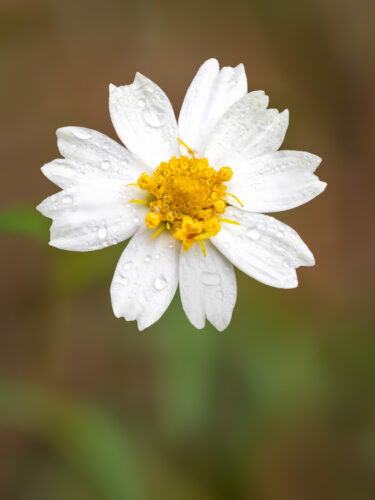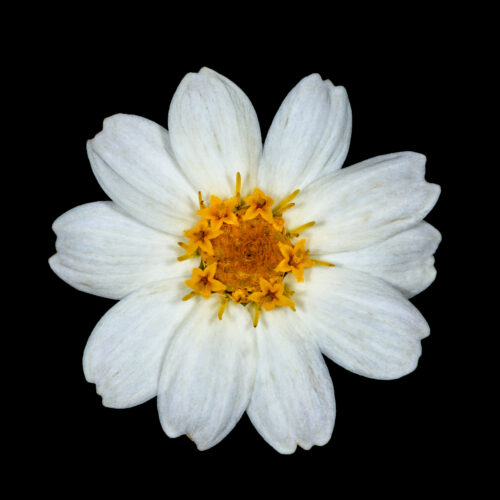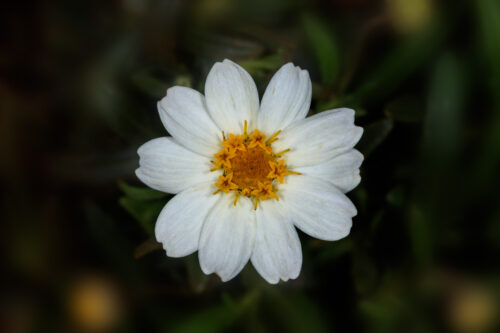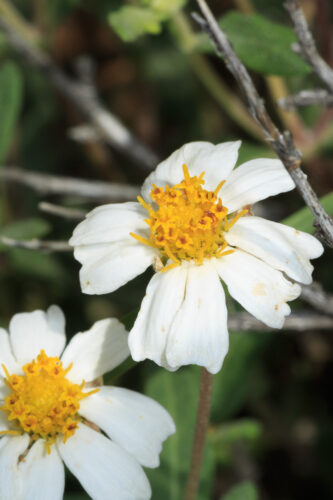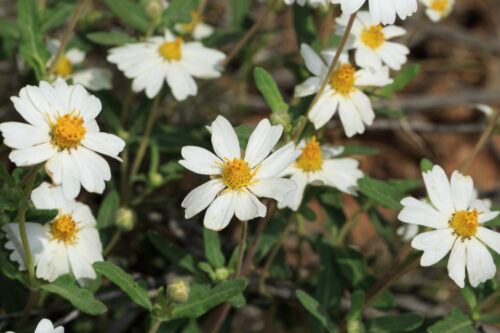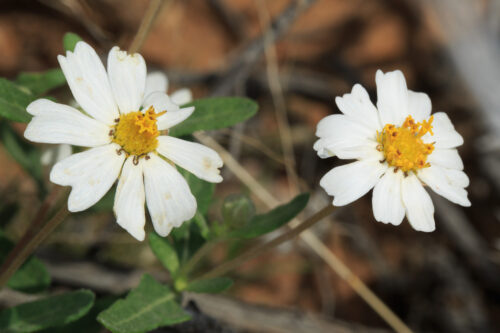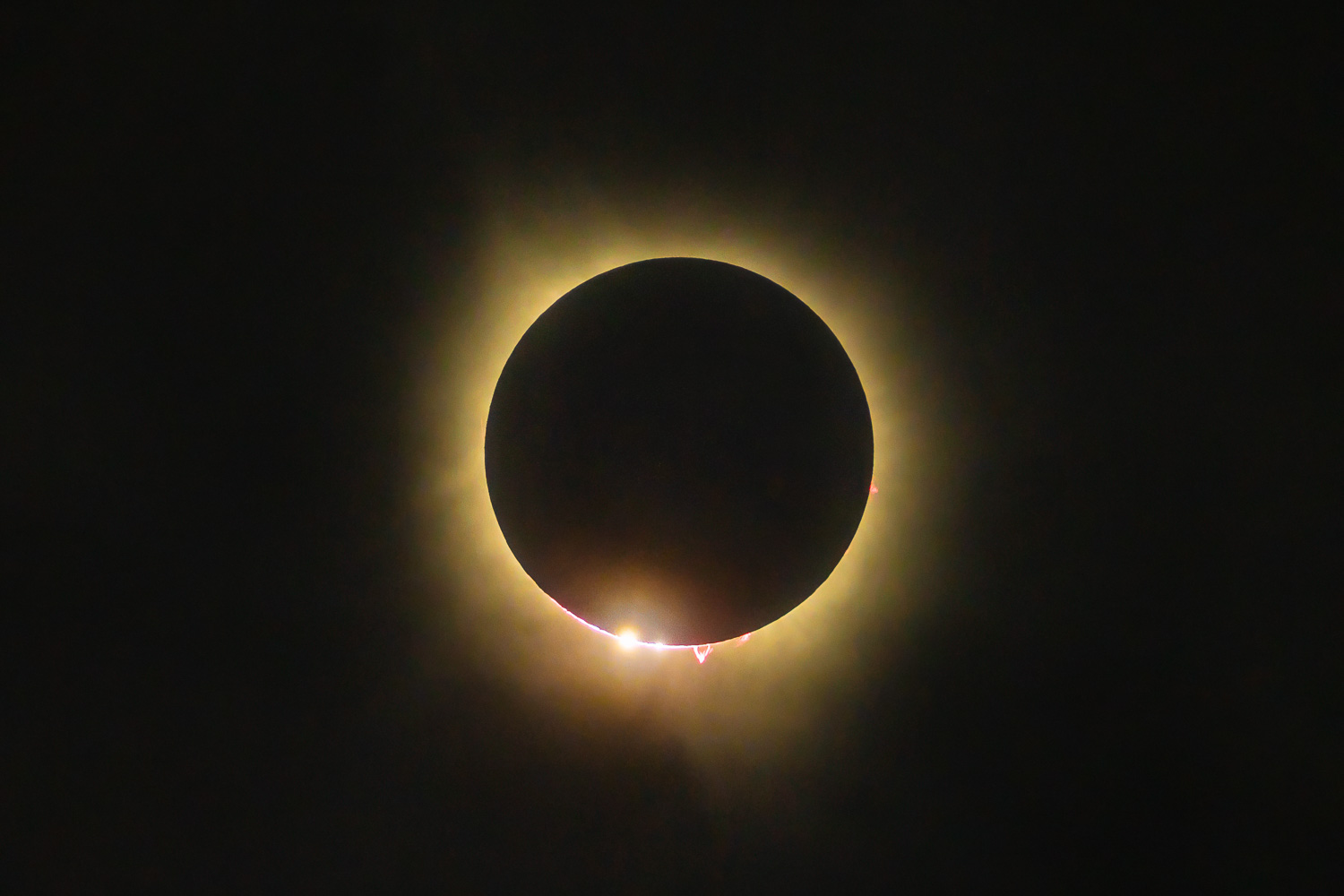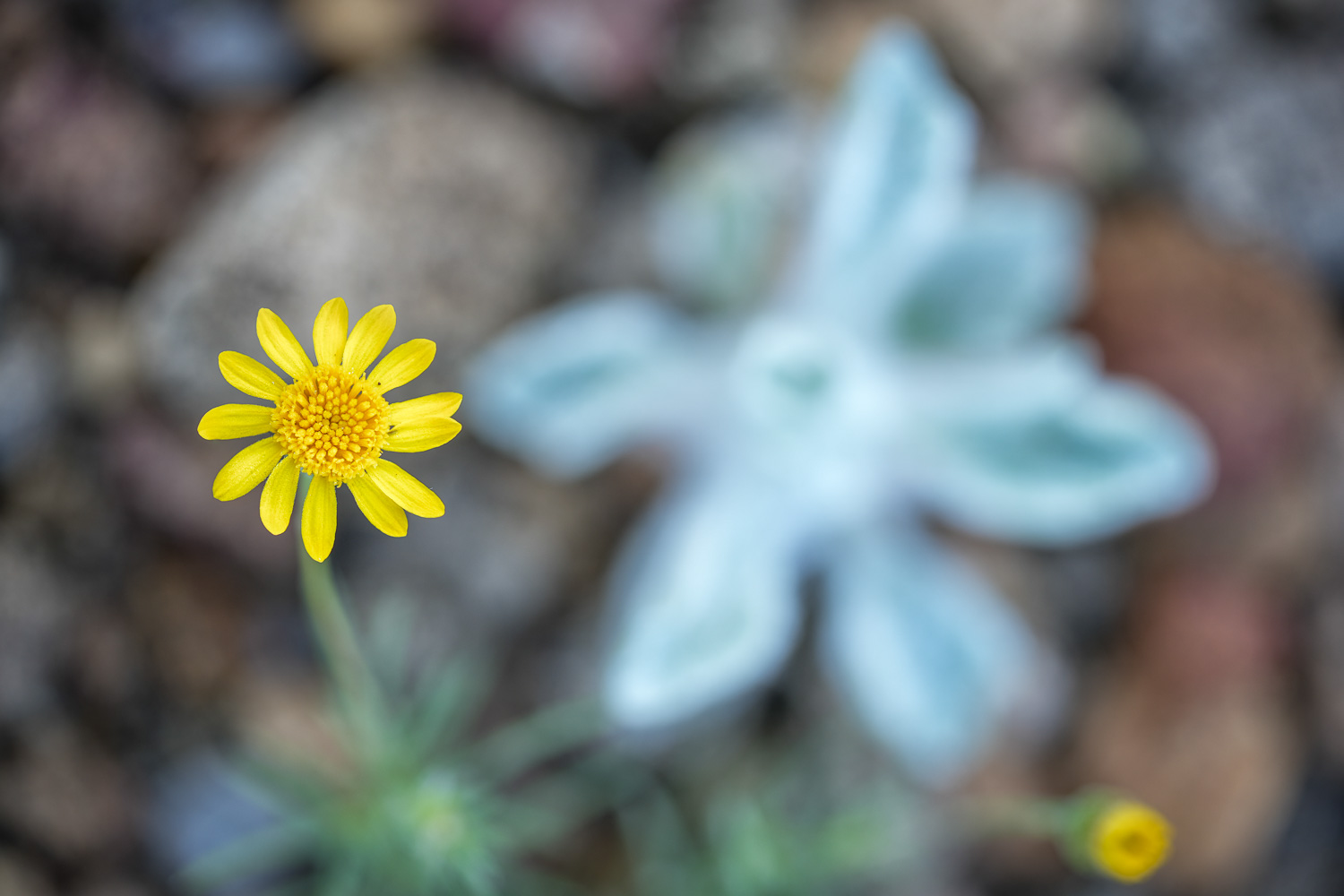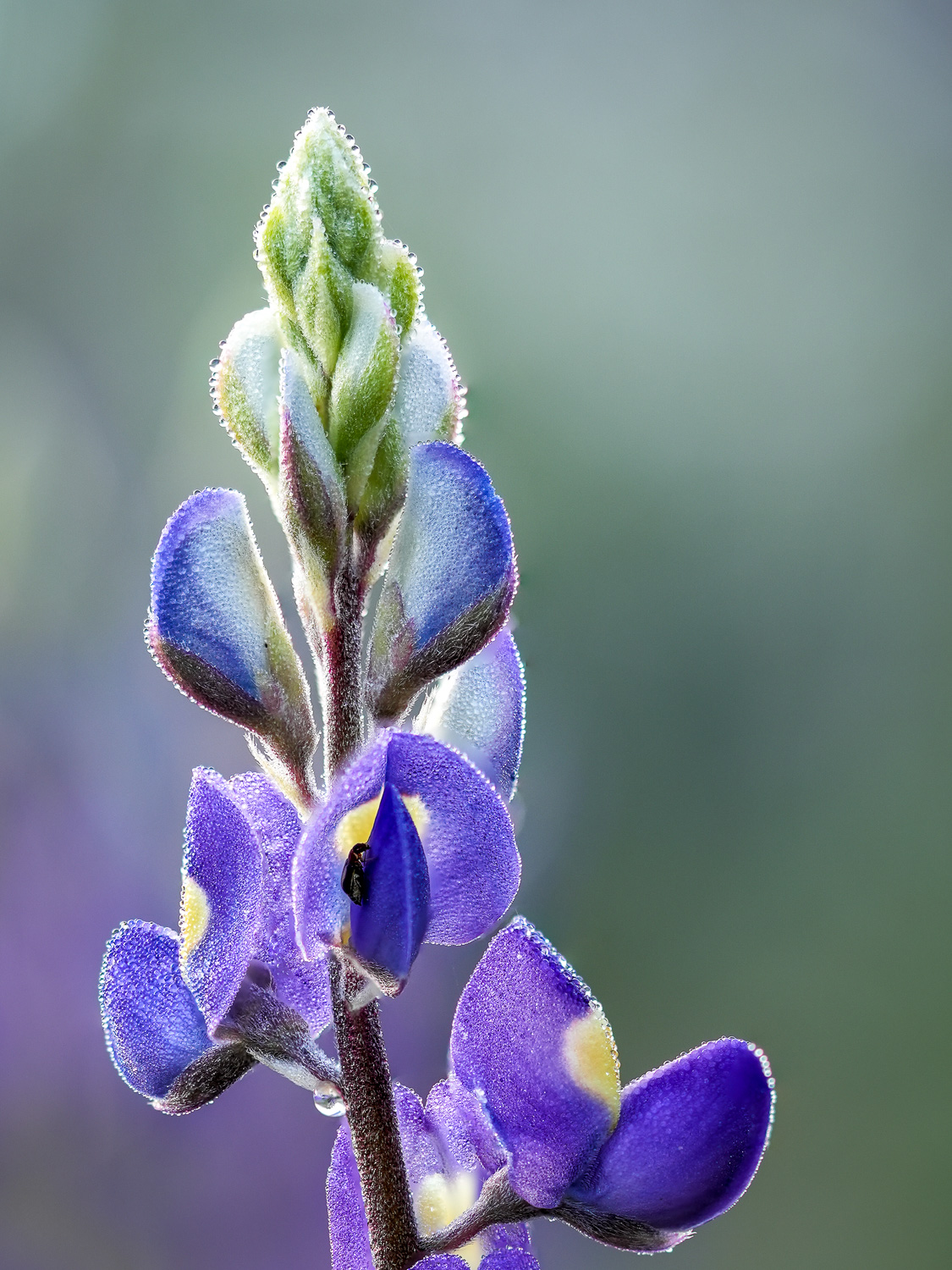Blackfoot Daisy (Melampodium leucanthum)
Description: A low, round, bushy plant with flower heads of 8-10 broad white rays surrounding a small yellow central disk. Plains blackfoot or blackfoot daisy is a low, bushy, mounded perennial, 6-12 in. tall and twice as wide. It is covered with narrow leaves and 1 in. wide, white, daisy-like flowers. The white rays are toothed at the tips and surround yellow disk flowers. These honey-scented flower heads are solitary and terminal on slender stalks. At first glance, Blackfoot Daisy appears to be the twin of White Zinnia (Zinnia acerosa), but flower heads of the latter species have 4-6 broad white rays and a narrow base of several overlapping scales. Both may be found in the same habitat, but the range of White Zinnia does not extend as far south as Blackfoot Daisy.
Family: Asteraceae
Synonym(s): Blackfoot Daisy, Rock daisy, Plains blackfoot, Arnica
USDA Symbol: MELE2
Duration: Perennial
Habit: Herb
Size Class: 1-3 ft.
Bloom Color: White, Yellow
Bloom Time: Mar, Apr, May, Jun, Jul, Aug, Sep, Oct, Nov
Water Use: Low
Light Requirements: Sun
Soil Moisture: Dry
Bloom Notes: Soil Description: Dry, rocky, calcareous soils. Rocky, Gravelly Sandy, Limestone-based, Caliche type.
Conditions Comments: Blackfoot daisy is a sturdy, mounding plant, that will flourish in rock gardens. It is heat and drought-tolerant. Good drainage is essential to its success. In late winter, older plants can be cut back halfway to keep them compact. Rich soil and abundant water will likely produce many more flowers in the short-term, but may consequently shorten the lifespan.
ATTRIBUTION: All of the Texas Wildflower images in this post are copyrighted and are the exclusive property of Terry B. Kahler. Reproduction without explicit written consent is prohibited. Some of the information contained in this section was taken from the Lady Bird Johnson Wildflower Center website and is being used under their terms of use. Redistribution from this site is prohibited. Additional information contained in this section was taken from the USDA website including the USDA code.
